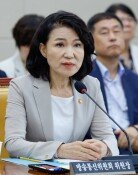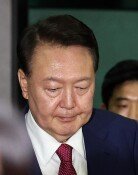[Opinion] The Keumchang-ri Solution
[Opinion] The Keumchang-ri Solution
Posted July. 02, 2004 22:12,
Surprising news was reported on the front page of The New York Times on August 17, 1998. It revealed that North Korea is building a large-scale nuclear facility underground and accordingly, it is highly likely that North Koreas nuclear development program will be restarted, which was once frozen by the North Korea-U.S. Geneva Agreement in 1994." Citing words of an official in the U. S. secret intelligence service that "we obtained a satellite picture of the construction site," the article became a triggering device for a few months since then. The so called Keumchang-ri Suspicion was the result.
The U.S. asked North Korea for an inspection of Keunchanglee. But the North strongly resisted. The North claimed that the suspected underground facilities had no concern with nuclear development and if the U.S. really had to inspect the spot, it should pay for the insult. North Korea even suggested 300m dollar as a concrete amount of money. After fierce psychological warfare, the two countries came to a conclusion in March, 1999. Its main point was an exchange between Keumchang-ri inspections and 0.6m tons of food aid. Two months after that, the U.S. inspecting group visiting Keumchang-ri found a hollow cave.
Experts say that the Keumchang-ri episode is one of the successful cases of North Korean negotiating techniques. If a salami strategy of showing a case one by one after splits in each negotiation is the basis of North Korean negotiating techniques, in the Keumchang-ri case, the North paid the price by making new card which had not existed before. Although the U.S. consoled itself saying that it stopped the North`s construction of nuclear facilities through inspection, the price was too high for just inspecting one cave.
The Foreign minister of North Korea, Baek Nam-sun, mentioned the Keumchang-ri Solution once again few days ago. In relation to the controversial highly-enriched uranium (HEU), he said, "We will show it clearly like the Keumchang-ri case if the U.S. suggests its basis." Of course, it is not free. The matter here is whether the Keumchang-ri Solution can solve North Korean nuclear development suspicions using uranium, and the answer is `No` without hesitation. It is because nuclear facilities of uranium are able to be concealed anywhere, unlike those of plutonium, if the North intends to. It is also hardly possible that the U.S. will be taken in again. Then what is the real solution? The best way for the North is to follow the precedent of Libya, which declared a nuclear abandonment. When the North can realize this obvious solution?
Editorial writer Song Moon-hong, songmh@donga.com




![[이진영 칼럼]꿈쩍도 않는 국힘 ‘쩍벌남’들](https://dimg.donga.com/c/138/175/90/1/wps/NEWS/IMAGE/2025/07/08/131964977.1.jpg)
![“동대표 갑질 못 참겠다”…관리사무소 전원 사직한 아파트 [e글e글]](https://dimg.donga.com/c/138/175/90/1/wps/NEWS/IMAGE/2025/07/08/131958287.2.jpg)

